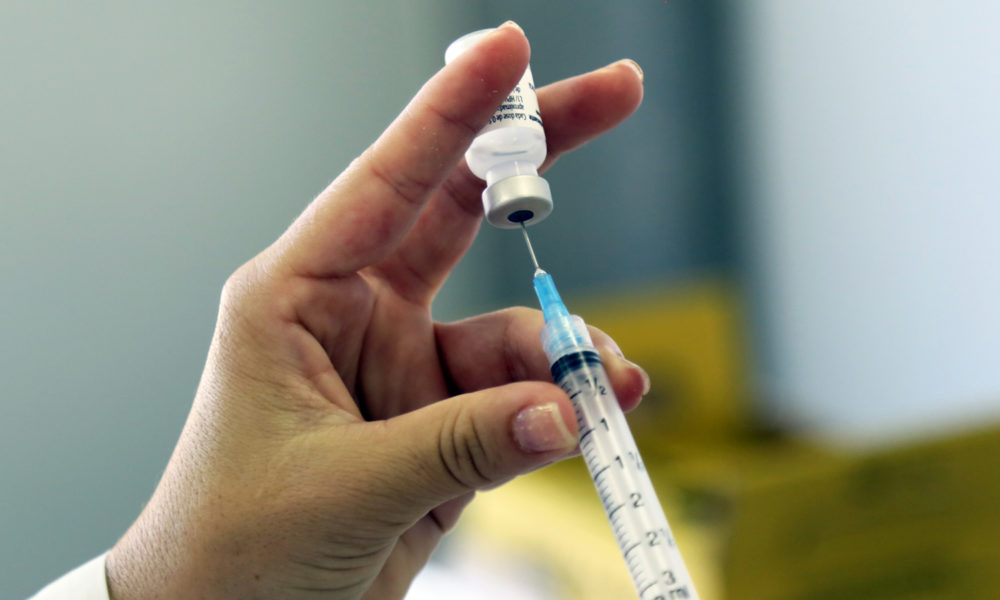Food and Drug Administration (FDA) scientists just did something pretty awesome – they stood up to bullying and won. And their win could be a key event in safeguarding the development of a safe and effective COVID-19 vaccine in the US.
The issue at stake is a set of guidelines for the pharmaceutical industry, specifying what kinds of scientific information must be submitted to the agency. Specifically, the FDA wants data to determine if a vaccine causes any adverse health effects after two months and to assess whether a vaccine can reduce the chance of severe COVID-19 cases as compared to a placebo. This should have been a moment for the entire country to cheer – the FDA was stating outright that, when comes to COVID-19 vaccine development, science would be the guiding star.
But in a dizzying turn of events, White House officials delayed, fully blocked, and then released the FDA’s new guidance document on the COVID-19 vaccine development process. The document managed to get published because FDA scientists and officials were persistent in fighting back against this sickening show of politicizing science. The publication of this guidance promotes a more transparent and robustly scientific process, which gives us a better chance of obtaining a safe and effective vaccine against this deadly disease.
Political officials steamrolled the FDA’s attempts to build public trust
On September 22, FDA scientists were excitedly signaling that they were about to release a new, stricter set of standards for the development of a COVID-19 vaccine. The guidelines, which are now available on the FDA’s website, specify that pharma companies must undertake certain safety steps if they want their COVID-19 vaccine to be approved under an emergency use authorization (EUA).
FDA scientists and officials knew that they needed to promote public trust in the agency and the vaccine development process. Vaccine hesitancy is on the rise. For instance, a recent Pew Research Center poll showed that the percentage of people willing to take a COVID-19 vaccine had fallen from 72 percent in May to 51 percent in September. The scientists worked on guidance to create checkpoints for industry that would make the vaccine regulatory process more transparent. Dr. Peter Marks, director of the FDA’s Center for Biologics Evaluation and Research, stated that, “being open and clear about the circumstances under which the issuance of an emergency use authorization for a COVID-19 vaccine would be appropriate is critical to building public confidence and ensuring the use of COVID-19 vaccines once available.”
For the guidance document, FDA scientists and officials went through all the clearance checks needed at the FDA and the Department of Health and Human Services (HHS). But top White House officials almost completely derailed the process just a few days later. Unbelievably, the White House officials demanded a detailed justification for even the existence of such a guidance document.
FDA officials and scientists patiently provided a detailed scientific rationale to the White House and also cleverly engaged in two other actions to thwart this block. First, according to Dr. Peter Marks, he and other health officials directly reached out to the companies developing COVID-19 vaccines to make them aware that the FDA expects them to follow these stricter standards. Second, the FDA attached the guidance document as part of the briefing materials for an upcoming meeting of its vaccine advisory committee, the Vaccines and Related Biological Products Advisory Committee.
On October 5, the New York Times reported that the White House had fully blocked the document, only for it to reverse course literally one day later and allow the document to be published, but only on the FDA’s website.
We desperately need more science-based checks during vaccine development
Considering that the normal process the FDA uses to approve vaccines takes several years (usually around 6 to 8 years with a 12 to 18 month registration process), the EUA process will almost certainly be the path used to approve a COVID-19 vaccine. However, the EUA process is an infamously low standard to meet, requiring only evidence that shows it is “reasonable to believe” that a product in question “may be effective” in treating a disease that has been identified as a public health emergency by HHS.
Experts have warned that the EUA standards are simply far too weak to properly assess a COVID-19 vaccine’s safety and efficiency. Unlike other EUA approvals, which have usually (though not always) been given to people who are sick with the disease of concern, a COVID-19 vaccine will eventually be given to healthy people from every race, gender, age, socioeconomic status, and other demographic status imaginable. Therefore, if we want a real assessment of any potentially dangerous side effects that may arise in the entire population of the US and potentially the world, it is imperative that the FDA hold pharma companies to a much higher standard during development and after approval.
How the guidelines will increase vaccine safety and efficiency
The FDA previously released a set of guidelines in July that outlined a few stricter steps, such as requiring that a COVID-19 vaccine have an efficiency of at least 50 percent, meaning that the vaccine reduces the risk of infection or decreases the disease’s severity in at least 50 percent of vaccinated people as compared to a placebo. The new October guidelines provide further context and many more stringent measures to ensure safety and efficiency.
In particular, the October guidelines added two notable standards:
- Phase three clinical trials will need to include a “median follow-up duration of at least two months after completion of the full vaccination regimen to help provide adequate information to assess a vaccine’s benefit-risk profile.” This two-month period, after the last dose of the administered vaccine, is to ensure that no unexpected adverse side effects occur. According to experts, if a vaccine causes a side effect, it has traditionally shown up within two to three months after the vaccine had been administered.
- As a check to see if the vaccine actually works, the FDA wants pharma companies to provide evidence of at least a few severe COVID-19 cases occurring in the placebo group. The idea is that, if severe cases are observed more often in the placebo group than the vaccine group, then the FDA can make an assessment to determine if the vaccine has the ability to stop severe forms of COVID-19 from occurring.
Preserving scientific integrity at the FDA
It is a great travesty that FDA scientists and health officials needed to jump through so many hoops just to inform the public that the agency will be following a stricter, more science-based process when evaluating potential COVID-19 vaccines. But we should be thankful and commend the FDA employees who fought a hard fight to publish this important guidance document. It is a good reminder that there are firewalls in place to ensure the vaccine development process is rigorous and that no shortcuts are taken at the expense of our health. We need to make sure that these checkpoints stay in place and support the FDA scientists that are fighting so hard to maintain scientific integrity.
If you want to continue to stay involved and learn more about how the FDA’s plans to evaluate safety and effectiveness of potential COVID-19 vaccines, register to attend the public teleconferenced meeting of the FDA’s Vaccines and Related Biological Products Advisory Committee on October 22. Considering that even the briefing materials of this committee meeting likely played a pivotal role in publishing of the guidance document, chances are the meeting itself will provide vital information on how the agency plans to place science at the forefront of the vaccine development process.

